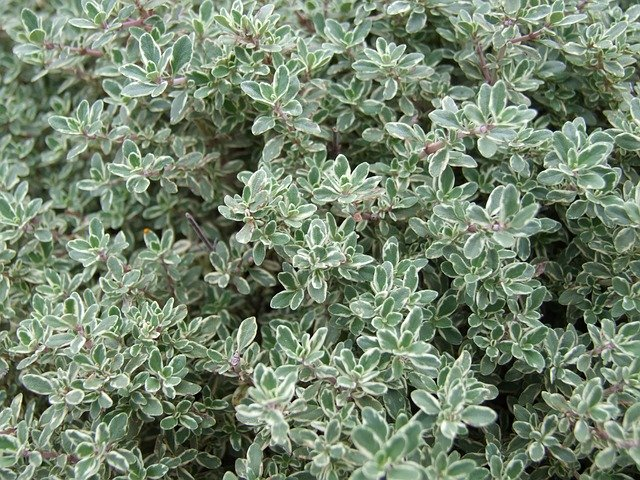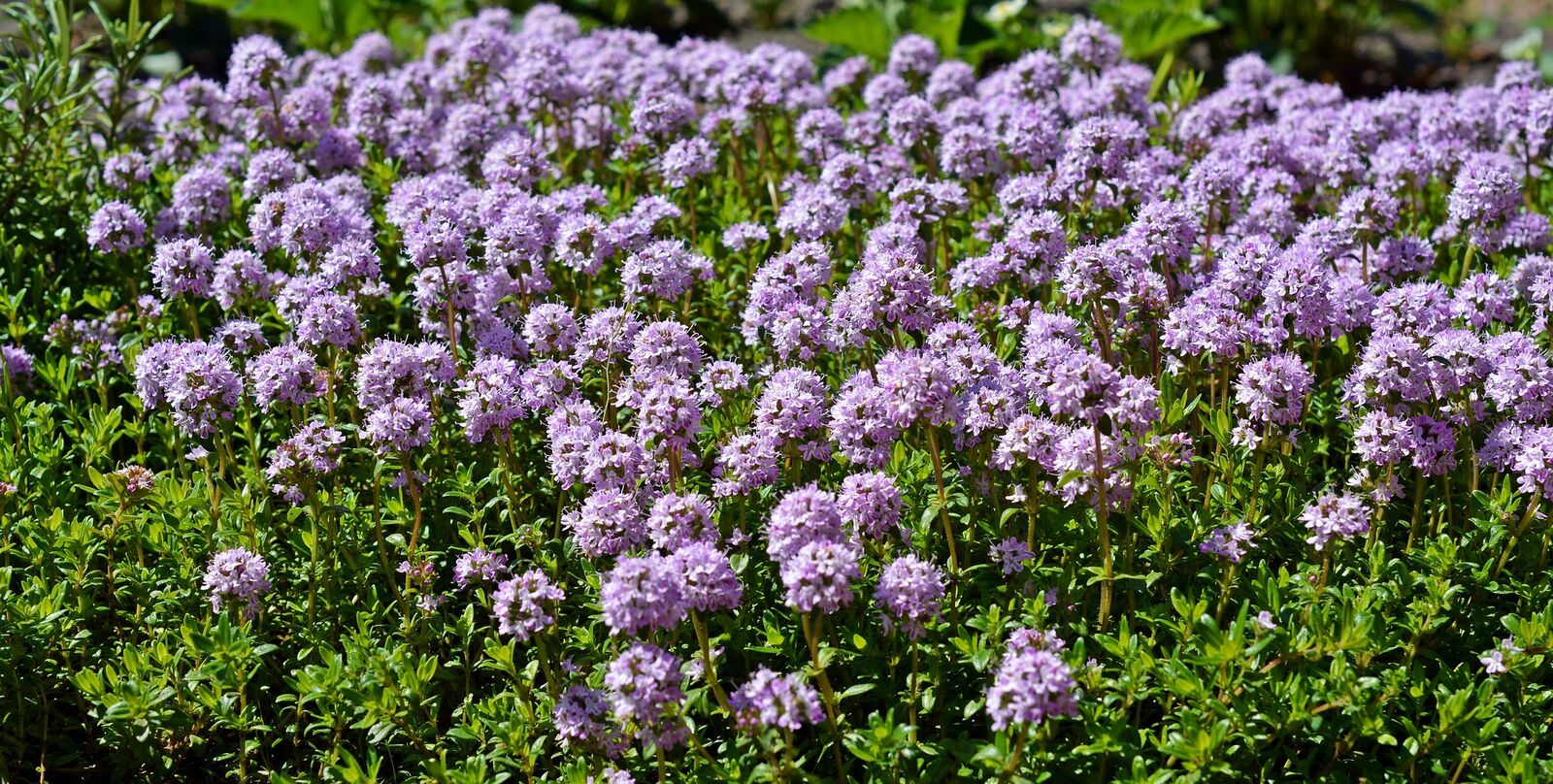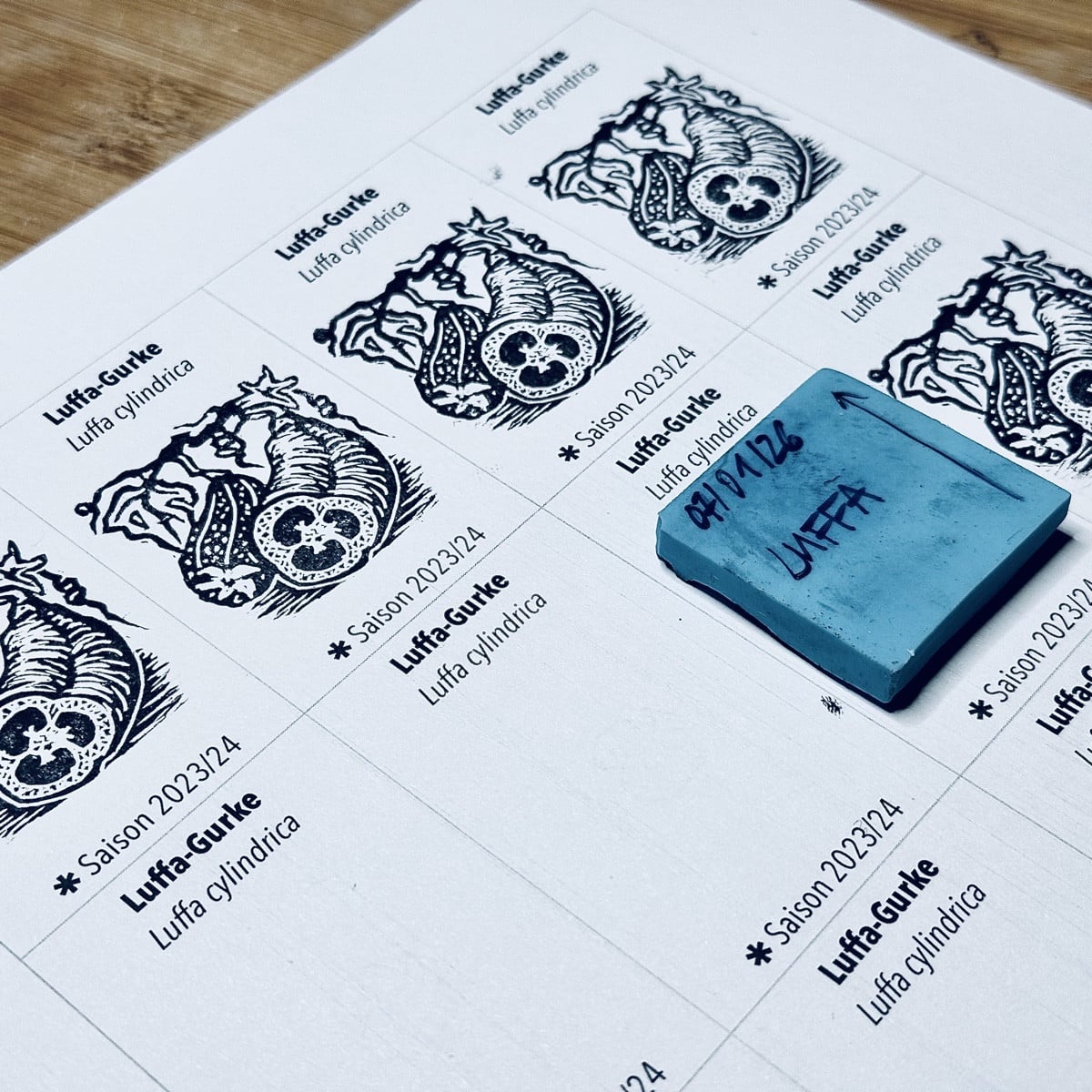
How to Propagate, Harvest and Cut Thyme
Like some other Mediterranean herbs, thyme belongs to the Lamiaceae family. The semi-shrub is a popular spice for Provençal dishes and is also known as a medicinal herb. Of course, it tastes particularly good fresh from your own garden. You can find out how to plant, cut and harvest thyme and tips on propagating and overwintering it here.
This Article Contains:
- The Thyme Plant: An Overview
- The Right Location
- Planting Thyme: Garden, Balcony or Raised Bed
- Mixed Cultivation: Thyme as Ground Cover or Shrub
- Companion Plants for Thyme
- Planting Plan for Your Herb Bed With Mediterranean Herbs
- Thyme Care Tips: Pruning, Fertilizing & Watering
- How to Cut Thyme: This Is How It Works
- Propagating Thyme by Cuttings: How to Do Offshoots
- Overwintering thyme: is thyme hardy?
- Harvesting & Drying Thyme
- Frequently Asked Questions About Planting Thyme
Quick Overview
Planting and Sowing Thyme: Location, Timing & Spacing
- Location: As a light feeder, thyme grows in light, lean and well-aerated soil. It likes sunny, warm spots.
- Sowing: from March on the windowsill
- Sowing depth: As a light germinator, only cover lightly with soil
- Planting: after the last frosts in May
- Planting distance: 20 x 20 cm/7,9 x 7,9 in (varies depending on variety)
- Varieties for pots: true thyme, lemon thyme
- Varieties that can be planted as ground cover: Sand thyme, Early flowering thyme
Cutting & Overwintering Thyme
- Prune in spring before budding and after harvesting/flowering. Cut off a maximum of one third of the shoots.
- Not all thyme varieties are hardy and some need to be overwintered indoors. However, varieties such as true thyme and broad-leaved thyme are frost-resistant and can overwinter outdoors.
The Thyme Plant: An Overview
Thyme (Thymus vulgaris) is part of the labiate family (Lamiaceae). The genus Thymus includes numerous thyme species and varieties, many of which are used in cooking and traditional medicine. You can find An Overview of Exciting Thyme Varieties in this article.
As a Mediterranean herb, thyme is a light feeder and thrives well in poor and light soils. Soil that is too rich in nutrients or too much fertilizer makes the thyme plant susceptible to disease and can change the taste of its leaves. In addition, thyme prefers it a little too dry rather than standing there with wet feet. As a medium-rooted plant, it forms shallow taproots with which it can store a lot of water close to the soil surface. On the other hand, it can fetch water from deep down in dry conditions. The semi-shrub grows perennially and is hardy, depending on the variety.
How Does Thyme Look Like?
Thyme has a semi-shrubby, bushy growth habit and reaches heights of between 15 and 40 cm/5,9 and 15,7 in. The small, elongated, oval leaves are quite small and delicate, just like the thyme flowers. Thyme flowers from June to September, but this varies depending on the variety, growing region, location and weather conditions. During flowering, thyme attracts numerous pollinators such as bees and bumblebees. As an evergreen shrub, thyme also retains its leaves in winter.

The Right Location
Thyme originates mainly from the Mediterranean region. Here it can be found in dry grasslands, on rocks and on walls. The soil should therefore be nutrient-poor, dry and well-drained. The semi-shrub also likes to grow in the sun. So look for a bright, sheltered and warm spot for it.
Planting Thyme: Garden, Balcony or Raised Bed
Whether in the garden or in a pot on the balcony, as long as the location is right, thyme will grow anywhere. You can buy young plants in spring and plant them after the last frost from mid-May to June. Keep a planting distance of 20 x 20 cm/7,9 x 7,9 in or larger, depending on how big you want your bush to be. If your soil is too heavy, make sure you mix in some sand beforehand.
You can also sow the light germinator yourself. To sow the seeds, mix potting compost with sand and moisten it well with a spray bottle. Then add a few seeds to the soil and press them down gently. Keep the substrate evenly moist, but be careful not to wash the seeds away when watering. They are very small and light. Germination can take up to three weeks. Pre-grow the seedlings on the windowsill in March so that they are big enough to plant out in May.
Can I Grow Thyme in a Pot?
Thyme is very suitable for growing in pots or containers. However, pay attention to the variety, as different types of thyme differ in their growth habit. A good variety for growing in pots, for example, would be true thyme, as it grows quite compactly.

Need Further Information?
Check out our community where you can exchange ideas, ask questions or simply share the joy of gardening with other passionate gardeners!
Join Community NowMixed Cultivation: Thyme as Ground Cover or Shrub

Thyme contains highly fragrant essential oils that keep pests away, making it ideal for mixed cultivation. Its flowers also attract beneficial insects. There are either varieties that grow bushy or varieties that act as ground cover to protect the soil and prevent water evaporation.
- Bushy growing varieties: true thyme, broad-leaved thyme, lemon thyme
- Ground-covering varieties: Early-flowering thyme, Sand thyme
Companion Plants for Thyme
Thyme is usually better suited to a herb bed in mid-latitudes as, unlike most vegetable plants, it prefers dry and nutrient-poor soil. You can combine many different herbs in a Herb Spiral, as you can create different conditions. In a Mediterranean vegetable patch with vegetables with moderate water requirements, thyme can be planted as a companion plant.
| Good Companion Plants | Bad Companion Plants | |
|---|---|---|
| blackberry | lemon balm | basil |
| broccoli | marigold | dill |
| cabbage | paprika | lovage |
| carrots | raspberry | marjoram |
| chilli | rosemary | mint |
| chives | sage | topinambur |
| horseradish | savory | |
| lavender | tarragon |
Note: Thyme is said to keep the cabbage white butterfly away from cabbage plants by preventing it from laying eggs. For this reason, thyme goes well next to cabbage. However, you should bear in mind that cabbage is a heavy feeder that likes to grow in nutrient-rich soil and requires more moisture. These are not good conditions for thyme plants.
Planting Plan for Your Herb Bed With Mediterranean Herbs
You can find ideas for planting and designing your herb bed with thyme here in the planting plans:
Thyme Care Tips: Pruning, Fertilizing & Watering
The semi-shrub is very easy to care for, it doesn't need much water or fertilizer. Only thyme growing in a pot needs a small dose in May or June. Otherwise, you should cut your thyme back regularly and, depending on the variety, possibly put it inside or cover it for the winter.
How to Cut Thyme: This Is How It Works
Annual pruning is important to promote compact growth and plant health while preventing the plant from becoming woody or bald. In spring, roughly between March and April, the evergreen branches should be cut back by around a third so that the plant can sprout vigorously again and prevent senescence. After flowering, cut off the tips of the shoots. Always cut above a leaf node so that it can sprout again more easily. You can then use the cut shoots fresh in the kitchen for cooking, or dry them.
Propagating Thyme by Cuttings: How to Do Offshoots
If you want to propagate your thyme, cut off a few longer shoots and place them in water or directly in sandy herb soil. Change the water regularly until roots have formed and then carefully plant the shoots. This type of propagation is called vegetative propagation, which produces genetically identical seedlings to the mother plant. You can find out how to take cuttings below:
- Cut off cuttings: Cut a fresh, non-woody shoot from a healthy thyme bush. This should be 5 to 10 cm/2 to 3,9 in long.
- Prepare the cuttings: Now remove the lower leaves, leaving leaves only at the tip so that you can plant the cutting or place it in water. These leaves would otherwise only rot and reduce the success of your own cuttings.
- Allow the cuttings to root: Now place the cutting either in water or in sandy herb soil so that it can take root. If it is in soil, it must be kept evenly moist. Now place the plant in a bright spot.
- Plant the cutting: The seedling should be firmly rooted or have developed roots after 6 weeks at the latest. You can now plant it in a bed or pot. If the plant was growing roots indoors, you should first acclimatize it to direct sunlight and temperature fluctuations and harden it off.
Overwintering thyme: is thyme hardy?
True thyme and broad-leaved thyme, for example, are hardy and need little protection; pine branches are sufficient here. However, not all types of thyme are frost-hardy. Therefore, cover the semi-shrub with fleece or better still overwinter it indoors in a cool, bright place. You can find more tips on How to Overwinter Thyme Properly in this article.
Harvesting & Drying Thyme
If you need fresh thyme, you can harvest the young shoots as they grow. For dried thyme, cut off shoots about 10 cm/3,9 in long before they flower. After flowering, the leaves lose their aroma and are less tasty. The stems are then tied together and hung upside down to dry.

Have fun growing your own thyme!
If you have any questions or comments, please write to us at [email protected]. Would you like to receive helpful gardening tips all year round and plan your own beds optimally? Then register here or download the Fryd app for Android or iOS.
Fryd - Your digital bed planner
Image by deluna on Pixabay

Marie
Marie is an agronomist. She is particularly interested in the sustainable and organic cultivation of vegetables and other plants. In her own garden, she gained experience and likes to try things out to learn from nature. She is particularly interested in the values and principles of permaculture, in order to contribute not only to the well-being of nature, but also to the well-being of people and future generations.
Learn MoreCurrent Topics in the Community
I'm currently planning my garden beds for this year. I would appreciate any recommendations for tomatoes that are suitable for outdoor cultivation. I'm also interested in beefsteak tomatoes that should work well outdoors. Thank you in advance!
Show 2 answers
Liked 4 times
Good morning. Please forgive me if this isn't the right place for this, but I'm looking for someone who would like to start a gardening project with me. I lack the knowledge and experience, but I have a suitable plot of land. 2000 square meters of orchard near Ingolstadt. The property is fenced in and I often took my dog there. (Dogs can run free.) What do I want? The ultimate goal is self-sufficiency. Starting small but complete... i.e., planting, harvesting, preserving. I would consider it a win-win situation if we help and support each other. So if you know anyone... Thank you very much.
Show 1 answer
Liked 10 times
The art campaign continues! In other news, who wants to swap loofah seeds? In the most beautiful seed packets in the whole world 😁 #SwapGarden
Popular Articles

Overwintering Parsley: How to Do It Successfully

How to Grow Lettuce in Winter: Varieties, Sowing, Harvesting

Growing Sage Plant: Tips for Sowing and Harvesting

What Herbs Can Be Planted Together?

Create & Design a Permaculture Garden

Overwintering Plants: Tubs, Pots and Raised Beds

Pruning, Fertilizing & Propagating Currants: Care Tips

Pruning Raspberries: How to Do It

Vegetable Garden With Greenhouse: How to Use Greenhouse Effect

Winterizing Beds and the Garden: How to Do It
FAQ
Thyme is a herbaceous perennial that grows in one location.
Not every thyme variety is hardy. Frost-resistant varieties include true thyme and broad-leaved thyme. However, most varieties are still partially hardy, but should be protected with fleece or brushwood in extreme temperatures.
When is the best time to plant thyme?
The heat-loving shrub should only be planted outdoors for the first time after the last frosts in May. This will allow it to root well and grow until the fall.
Prune your thyme plant before budding in spring and after flowering in late summer to promote compact growth. Shorten the individual shoots by a maximum of a third.